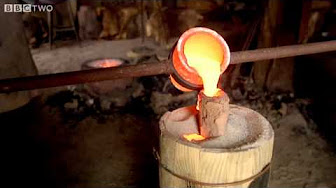
About Sheet Metal working Tools
History
No one knows where or when metalworking began, but archeological findings confirm that the pharaohs in Egypt, the Vedic kings in India, the tribes in ancient Israel and the Mayans in South America used precious metals extensively. These ancient metalworkers were highly skilled and created objects of adornment, religious artifacts and trade instruments, as well as weaponry.
Manual Tools
Before the advent of electricity, metal sheets were cut into different shapes using manual tools. These tools are still available today for hobbyists and crafters who do not need to cut sheet metal on an industrial scale. These tools are basically special scissors, called “snips,” and are color-coded according to the type of cut they make: green-handled snips cut clockwise curves, red-handled snips cut counterclockwise curves, and yellow-handled snips make straight cuts.
Soft Metal Sheets
Straight or circular blades–such as snips–are used for cutting soft metals. These can include such materials as the ArtEmboss soft metal sheets used in crafting and aluminum sheets used in manufacturing. ArtEmboss sheets do not have sharp edges and so are safe to use by younger crafters; they are also extremely pliable and come in wide variety of colors (see Resources below). Snips can be adjusted to make thicker or thinner cuts depending on the type of soft sheet metal being used.
Hard Metal Sheets
Different shearing processes are used when hard metals need to be cut. Manual tools in this category include saws, chisels and shears (another way to refer to snips). Saws have thin metal blades or disks with sharp, usually toothed edges. Chisels have sharp beveled edges and are used not only to cut but also to shape hard metals. Heavy-duty shears, or snips, can be used to cut very thin hard sheet metals, but they become impractical with thicker hard medals, since they require tremendous hand force to cut through the tough material.
Mechanical Processes
Industrial applications that use machines to cut sheet metal include such techniques as turning, milling, drilling, grinding and sawing.Welding/burning technologies burn through sheet metals using either lasers, oxy-fuel burns or even plasma beams (high-energy pulse of energy).Erosion technologies include extremely pressurized water jets and electric discharges. These processes are used extensively in industrial applications for cutting very thick sheet metals that would be impossible to cut using only muscle force.
Significance
Sheet metal working tools are indispensable in the modern world, since these tools are instrumental in the manufacturing of aircraft and cars, blacksmithing and tinsmithing, to name a few of the many industries and applications that use metal sheet-cutting tools. The tools are also used in constructing electronic equipment such as computer housing units and in industrial and technological applications from construction to shipping containers.
Modern Manufacturing utilizes modern equipment to be utilized in in the metal working process. With the advent of Lasers, metal working moved into a new era. These machines can laser cut shapes that are complicated, and they can do so with precision and high repeatability. This adds a level of quality to any manufacturing process.
Laser cutting is accomplished by generating a powerful light beam, concentrating and focusing that light beam to a tool that is used to cut through sheet metal and steel plates. Laser cutting is an extremely productive method of cutting metal. The most competitive of these machines can cut up to 30,000 pounds of metal in 24 hours. Steel, stainless steel, aluminum, plastic, are all good candidates for laser cutting.
Metal working that utilizes metal forming methods in additional detail is covered in other articles.
For more information on metal working and Laser Cutting contact: